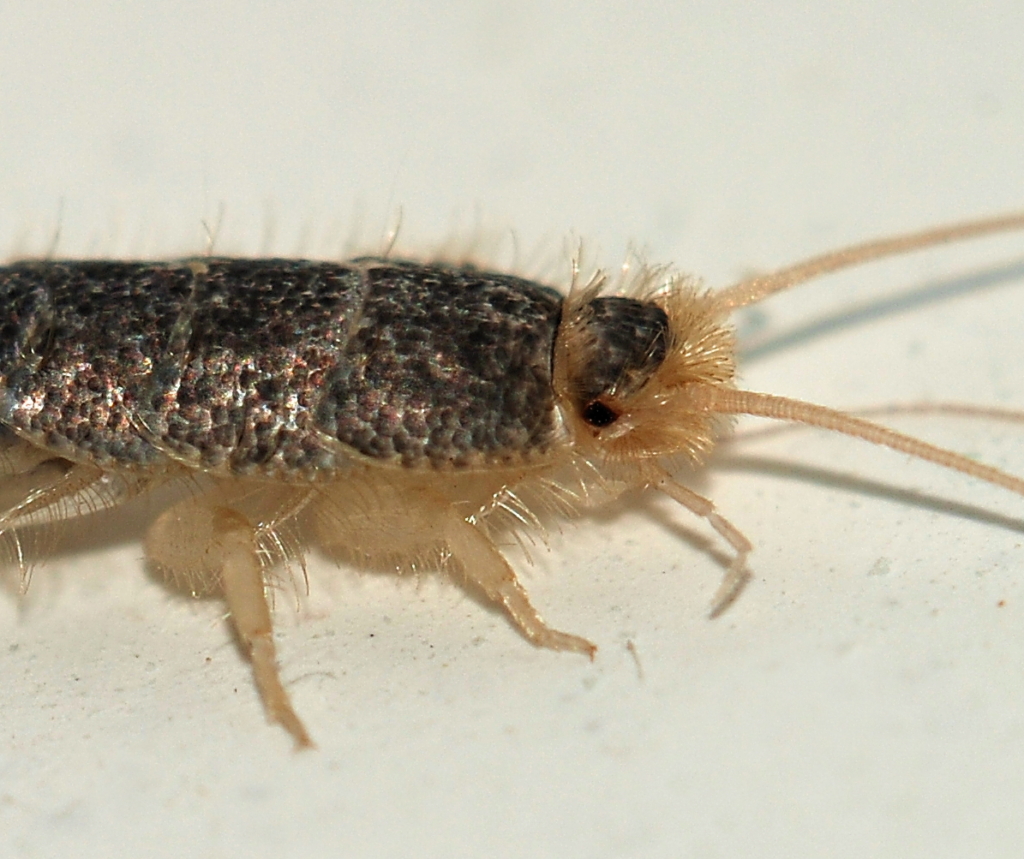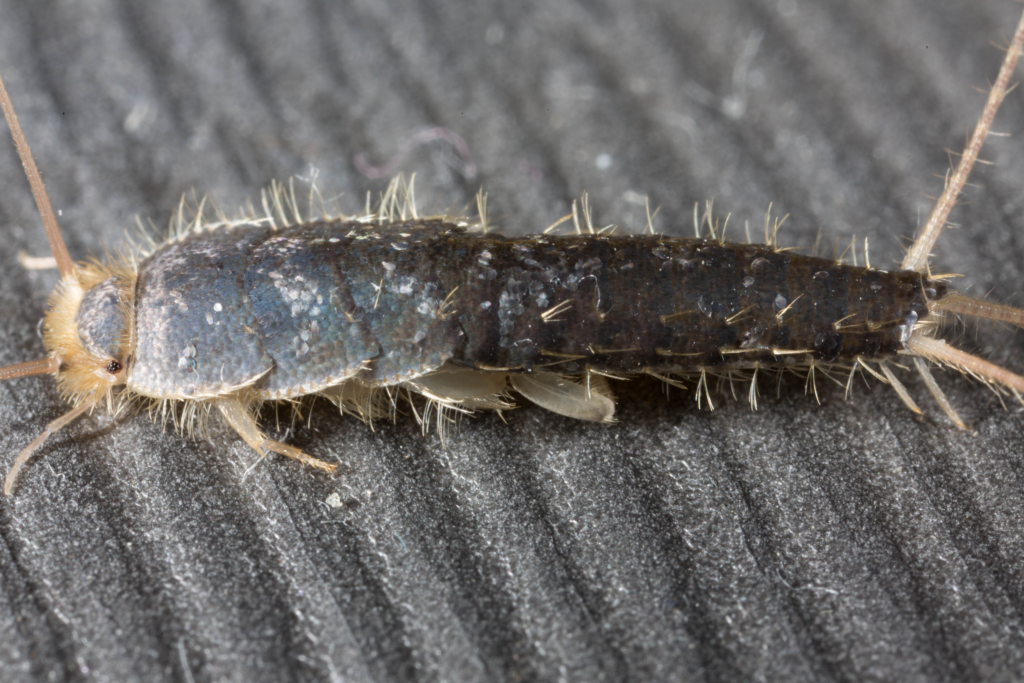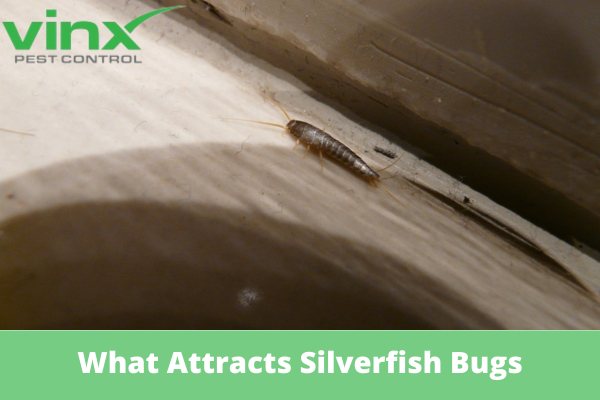Silverfish bugs are common pests in homes. They damage books, papers, and other cellulose materials. Knowing what attracts them helps prevent silverfish bug infestation in your home.
These pests like moist, dark places. You can find them in basements, bathrooms, and kitchens. High humidity, leaky pipes, and bad ventilation make their homes perfect.
This article will tell you what draws silverfish bugs. It also shares tips to stop them from infesting your home. By knowing what attracts them, you can protect your belongings and home.
Key Takeaways
- Silverfish bugs are attracted to moisture and humidity.
- Dark areas and cluttered spaces encourage silverfish infestation.
- Understanding attractants is key to preventing infestation.
- Vinx pest control offers solutions for managing silverfish problems.
- Prevention involves addressing environmental factors.
Understanding Silverfish Bugs: Identification and Behavior
To manage silverfish, knowing what they look like and how they act is key. Silverfish bugs are small, wingless, and shiny. They are easy to spot once you know what to look for.

Physical Characteristics of Silverfish
Silverfish are 1/2 to 3/4 inches long. They have a teardrop body and three long, thin tails. Their bodies are covered in a shiny, grayish scale.
They are flat and move fast. This makes them hard to catch.
Lifecycle and Reproduction Habits
Silverfish go through three stages: egg, nymph, and adult. Female silverfish lay up to 100 eggs at once. They do this in dark, damp places.
The eggs hatch into nymphs. These look like small adults but without scales. As they grow, they get their shiny scales. They can have babies all year, growing fast in the right places.
Nocturnal Behavior and Movement Patterns
Silverfish are most active at night. They like dark, damp spots, like bathrooms and kitchens. During the day, they hide in small spaces.
At night, they come out to find food. For more on what draws silverfish to your home, check https://vinxpestcontrol.com/what-attracts-silverfish/.
Common Attractants for Silverfish in Your Home
If you have silverfish at home, it’s key to know what attracts them. Silverfish bugs like certain things that make your home perfect for them.
Moisture and Humidity Levels
Silverfish love humid places, needing more than 50% humidity. Leaks, bad air flow, and damp basements are great for them. Fix leaks, improve air flow, and use a dehumidifier in damp spots.
Checking for moisture often can help stop silverfish from coming.
Food Sources That Attract Silverfish
Silverfish like carbs and proteins. They eat paper, glue, and some fabrics. They also eat dead bugs, dandruff, and small proteins.
To keep silverfish away, store food and paper right. Clean crumbs and dust often. And don’t clutter your space.

Dark and Undisturbed Areas
Silverfish like dark, quiet spots to hide and eat. Cluttered places like closets are perfect for them. To keep them away, make these areas bright and tidy.
Cleaning and organizing often can make your home less appealing to silverfish.
Moisture: The Primary Silverfish Attractant
Moisture is key for silverfish bugs. Knowing its role helps stop infestations. Silverfish love humid places and need moisture to live.
Why Silverfish Need Moisture to Survive
Silverfish need moisture to live. It helps them do basic things like move and eat. Without it, they dry out and die.
Common Moisture Problems in Homes
High humidity or water damage invites silverfish. Common issues include:
- Leaks under sinks or around appliances
- Poor ventilation in bathrooms and basements
- Water damage from floods or burst pipes
Fixing these problems stops silverfish from coming.
Measuring and Monitoring Humidity Levels
To keep silverfish away, check your home’s humidity. Use a hygrometer to find high spots. Keep humidity between 30-50% to make your home less inviting to them.
Food Sources That Bring Silverfish Bugs Into Your Home
Silverfish bugs like many foods in homes. Knowing what they like helps stop them from coming in. They eat a lot of different things.
Carbohydrates and Starches
Silverfish love carbs and starches. They find them in many household items. Foods like cereals, pasta, and rice attract them if not kept sealed.
Starchy things like wallpaper glue and book bindings also draw them in. To keep silverfish away, store food in sealed containers. Clean up spills and crumbs fast.

Paper Products and Books
Silverfish really like paper, including books and documents. The cellulose in paper is good for them. This makes libraries, offices, and homes with lots of paper good places for them.
To lower the chance of silverfish, keep paper in dry, well-ventilated spots. Use silverfish-repellent materials or diatomaceous earth around paper.
Protein Sources: Dead Insects and Dandruff
Silverfish also eat protein. Dead insects and their eggs, human dandruff, and other skin bits are good for them. Keeping your home clean and clutter-free is key.
Vacuum often, where dust builds up. This helps get rid of protein sources and makes your home less appealing to silverfish.
Ideal Habitats: Where Silverfish Like to Hide
It’s important to know where silverfish like to hide. They prefer humid, dark places with lots of food.
These spots are common in homes. So, it’s key to look for signs of silverfish in these areas.
Bathrooms and Kitchens
Bathrooms and kitchens are perfect for silverfish. They love the dampness from leaks and bad air flow. In kitchens, they go for starchy foods and dirty dishes.
Basements and Attics
Basements and attics are also home to silverfish. Basements are damp, while attics are dry but full of paper. Both are great for silverfish to hide and grow.
Closets and Storage Areas
Closets and storage spots are also silverfish favorites. They like the dark and the paper products. Cleaning these areas often can keep silverfish away.
Seasonal Patterns of Silverfish Bugs Activity
Knowing how seasons change affects silverfish bugs is key. Their activity changes with the seasons. This is because they are sensitive to their environment.

Summer and Spring Behavior
In summer and spring, silverfish bugs are more active. This is because of the warm weather and high humidity. These conditions help them survive and reproduce.
They like moist places like bathrooms, kitchens, and basements. This is where they are most active.
Fall and Winter Infestations
In fall and winter, silverfish bugs may move inside. This is because outdoor conditions are not good for them. They look for places with moisture and food.
If not managed, these places can become infested with silverfish bugs.
Weather-Related Movement Patterns
Weather can also affect silverfish bugs. For example, a long drought can make them look for moisture inside. On the other hand, too much rain can make it humid. This makes them more active.
Signs of a Silverfish Bug Infestation
Knowing the signs of a silverfish infestation is key to taking back your home. These pests can damage a lot if not stopped early.
Visual Evidence: Spotting Live Silverfish
Seeing silverfish bugs is a clear sign of an infestation. They are most active at night. They hide in dark places during the day.
Damage to Personal Belongings
Silverfish eat carbs, proteins, and nutrients in household items. Damage to books, papers, clothes, and wallpaper shows they are around.
Yellow Stains and Scales
Silverfish shed scales, leaving yellow stains. These stains and scales show they are present.
Knowing these signs helps spot silverfish early. Check often, mainly in damp areas, to catch them before they damage a lot.

Preventing Silverfish Infestations: Practical Solutions
To stop silverfish, we need to tackle the problem from many angles. Knowing what silverfish like and acting early can help a lot. This way, you can keep your home safe from these pests.
Moisture Control Strategies
Keeping moisture down is key to stopping silverfish. Here are some good ways to do it:
- Fix any water leaks or condensation issues right away.
- Make sure humid places like bathrooms and kitchens have good air flow.
- Use a dehumidifier to keep humidity under 50%.
Less moisture means your home is less inviting to silverfish.
Food Source Elimination
Getting rid of food for silverfish is also very important. Here’s how:
- Keep food and paper products in dry, airy spots.
- Clean up crumbs, dust, and other messes often.
- Don’t store boxes or clutter that silverfish might like.
With fewer food sources, silverfish won’t want to stay in your home.
Home Maintenance Practices
Keeping your home in good shape helps prevent silverfish. Here’s what to do:
- Check your home often for silverfish signs.
- Seal up any gaps around windows, doors, and pipes.
- Keep your home tidy and free of clutter.
By using these tips, you can keep your home silverfish-free. This is a big part of controlling silverfish.
DIY Methods to Eliminate Silverfish Bugs
To get rid of silverfish bugs, you can try a few DIY tricks. These methods help make your home less welcoming to silverfish. They use different ways to keep these bugs away.

Natural Repellents and Deterrents
Using natural repellents can keep silverfish away. Oils like lavender, cedar, and citrus work well. Just mix a few drops of these oils with water and spray them in silverfish spots.
- Lavender oil
- Cedar oil
- Citrus oil
Homemade Traps and Baits
Homemade traps can catch and get rid of silverfish. A simple trap is a glass jar with bait like bread or cereal inside. Silverfish will be drawn to the bait and get trapped.
Another trick is to use sticky traps in silverfish hotspots.
Diatomaceous Earth and Boric Acid Applications
Diatomaceous earth and boric acid are great against silverfish. Diatomaceous earth dries out silverfish, killing them. Sprinkle it around your home’s edges and in silverfish areas.
Boric acid can be used as powder or mixed with water for a spray. It’s toxic to silverfish and works well in their favorite spots.
Professional Silverfish Control Solutions from Vinx
Vinx offers professional solutions for silverfish control. Our team of expert technicians provides services to get rid of silverfish. We also help prevent them from coming back.
Comprehensive Inspection Services
Vinx’s inspection services find the source of your silverfish problem. Our technicians check your home for moisture, food, and places silverfish like. This helps us make a plan just for you.
Targeted Treatment Options
We have treatments that kill silverfish bugs. Vinx’s team uses baits, traps, and insecticides. We also teach you how to keep your home silverfish-free. Our plans are made just for you.
Long-term Prevention Plans
Vinx’s plans keep your home silverfish-free for good. Our team finds where silverfish might come in and how to stop them. With these steps, your home will stay pest-free for a long time. (
Conclusion: Taking Control of Your Silverfish Problem
Understanding silverfish is key to managing them. Fixing moisture issues and removing food helps. Sealing entry points also helps a lot.
Vinx offers great help for silverfish problems. They do inspections, treatments, and prevention plans. Their knowledge in silverfish removal helps homeowners.
Being proactive and getting help when needed is important. It keeps homes safe from silverfish damage. Using the right solutions and strategies keeps your place pest-free.
FAQ
Q: What are silverfish bugs attracted to?
A: Silverfish bugs like moisture and humidity. They also like carbs, starches, and paper.
Q: How to identify silverfish bugs?
A: Silverfish bugs are long and gray or silver. They have a teardrop-shaped tail.
Q: What are the signs of a silverfish infestation?
A: Look for live silverfish and damage to things. Also, watch for yellow stains or scales.
Q: How to prevent silverfish infestations?
A: Keep moisture low and get rid of food they like. Also, keep your home clean and clutter-free.
Q: What are some DIY methods to eliminate silverfish bugs?
A: Use natural repellents and make homemade traps. You can also use diatomaceous earth and boric acid.
Q: How to get rid of silverfish bugs?
A: First, find and fix what attracts them. Then, use DIY methods or get help from a pro.
Q: What is the role of moisture in attracting silverfish?
A: Moisture is key for silverfish. They need it to live. High humidity can lead to more of them.
Q: How to measure and monitor humidity levels to prevent silverfish infestations?
A: Use a hygrometer to check humidity. Keep it below 50% to stop silverfish.
Q: What are some common habitats and hiding spots of silverfish in homes?
A: Silverfish like bathrooms, kitchens, basements, and attics. They hide in dark, humid spots.
Q: How do seasonal patterns influence silverfish activity?
A: Silverfish are more active in warm months. They might infest more in fall and winter.
Q: What are the benefits of seeking professional help for silverfish infestations?
A: Pros like Vinx offer detailed inspections and treatments. They also help prevent future problems.
Q: How to use silverfish traps effectively?
A: Place traps where silverfish are active. This means near moisture or in dark spots.



